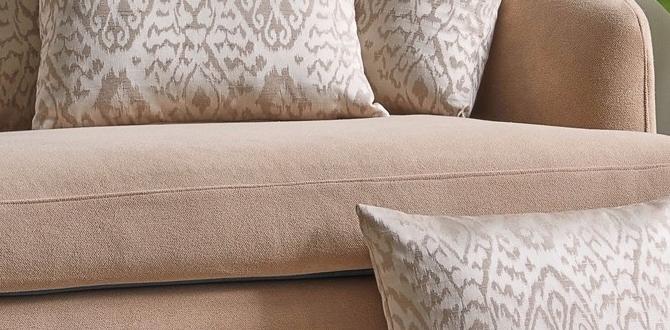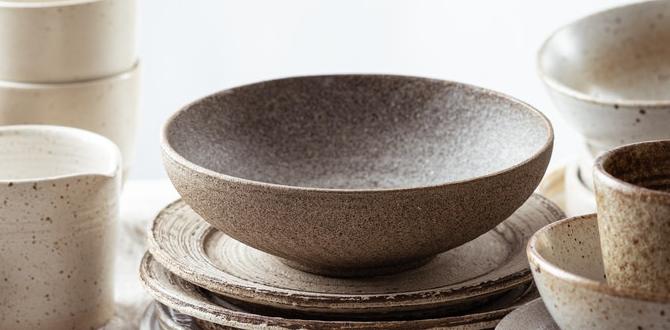Bolded Quick Summary:
Caring for a Bird of Paradise indoors involves providing bright, indirect light, consistent watering (letting the top inch of soil dry out), well-draining soil, and regular feeding during the growing season. Mimicking its tropical home will reward you with its stunning, exotic blooms.
How to Care for Bird of Paradise Indoors: Essential Tips
Dreaming of bringing a taste of the tropics into your home? The Bird of Paradise plant (Strelitzia reginae) is a showstopper with its unique, flamingo-like flowers and large, banana-like leaves. But for beginners, keeping this exotic beauty thriving indoors can feel a little daunting. Don’t worry! With a few simple tips, you can easily create the perfect environment for your Bird of Paradise to flourish. We’ll walk you through everything you need to know, from light and water to soil and troubleshooting, so you can enjoy its stunning blooms year-round. Get ready to transform your space into a lush, tropical oasis!
Understanding Your Bird of Paradise
The Bird of Paradise plant hails from the sunny coasts of South Africa. It’s known for its incredible flowers that truly resemble a tropical bird in flight, hence its name. Indoors, it’s typically grown for its architectural foliage, with the flowers being a delightful bonus if conditions are just right. These plants are surprisingly resilient, but they do have specific needs that, when met, lead to happy, healthy growth and, potentially, those amazing blooms.
Understanding its natural habitat is key to replicating it indoors. They love warmth, plenty of bright light, and good drainage, much like they’d experience on a sun-drenched savanna.
Essential Care Requirements
Let’s dive into the nitty-gritty of keeping your Bird of Paradise happy and healthy. These are the most crucial elements to get right for success.
1. Light: The Brighter, The Better!
Bird of Paradise plants are sun-worshippers. Indoors, this translates to needing the brightest spot you can offer. They thrive in direct sunlight for at least 4-6 hours a day, but in a home environment, this needs to be managed carefully to avoid scorching their leaves.
- Ideal Placement: A south-facing window is usually the best choice in the Northern Hemisphere. East or west-facing windows can also work if they provide consistent bright light throughout the day without intense, direct midday sun during the hottest summer months.
- Signs of Insufficient Light: If your plant isn’t getting enough light, you might notice leggy growth (long stems with sparse leaves), smaller leaves, and a lack of flowering.
- Acclimating to Light: If you’re moving your plant to a brighter spot, do it gradually over a week or two to prevent leaf burn.
For more insights on how light affects houseplants, the Oregon State University Extension Service offers excellent resources on houseplant light requirements.
2. Watering: Finding the Right Balance
Watering is often where new plant parents stumble, but for Bird of Paradise, it’s all about consistency and avoiding waterlogged roots.
- How Often: Water thoroughly when the top 1-2 inches of soil feel dry to the touch. This might be once a week in warmer months or less frequently in cooler periods.
- How to Water: Water until you see it drain from the bottom of the pot. Discard any excess water that collects in the saucer after about 30 minutes. Standing water can lead to root rot, which is a major problem for these plants.
- Water Quality: Bird of Paradise can be sensitive to chemicals in tap water, like fluoride and chlorine, which can cause brown leaf tips. If you notice this, try using filtered water, distilled water, or rainwater. Alternatively, you can let tap water sit out overnight to allow some of the chlorine to dissipate.
- Signs of Underwatering: Drooping leaves or crispy brown edges are often indicators that your plant needs a drink.
- Signs of Overwatering: Yellowing leaves (especially lower ones), mushy stems, and a foul odor from the soil are signs of too much moisture.
3. Humidity: Mimicking the Tropics
These tropical beauties love a good dose of humidity. Average household humidity levels can sometimes be too low, especially in winter when heating systems are running. Low humidity can lead to dry, brown leaf tips.
- Increase Humidity:
- Misting: Lightly mist the leaves with water every few days. While this is a temporary fix, it can help.
- Pebble Tray: Place the pot on a tray filled with pebbles and water. As the water evaporates, it increases humidity around the plant. Ensure the bottom of the pot is not sitting directly in the water.
- Grouping Plants: Placing your Bird of Paradise near other plants can create a microclimate with higher humidity.
- Humidifier: Using a room humidifier is the most effective way to consistently raise humidity levels in your home for your plants.
A hygrometer is a small, inexpensive device that can help you measure the humidity levels in your home.
4. Soil and Potting: Drainage is Key
The right soil mix is crucial for preventing root rot and providing the nutrients your plant needs.
- Soil Mix: Use a well-draining potting mix. A good blend might include equal parts potting soil, perlite, and peat moss or coco coir. You can also find specific cactus or succulent mixes that work well, as they are designed for excellent drainage.
- Pot Choice: Choose a pot with drainage holes. Terracotta pots are excellent for Bird of Paradise as they are porous and help the soil dry out more evenly than plastic pots.
- Repotting: Bird of Paradise plants prefer to be a bit root-bound, so they don’t need frequent repotting. Repot every 2-3 years, or when you see roots growing out of the drainage holes or the plant seems top-heavy. Repot in the spring into a pot that is only 1-2 inches larger than the current one.
For more information on soil types and their importance, the Royal Horticultural Society (RHS) provides comprehensive guidance on soil for plant growth.
5. Temperature: Warmth is Preferred
Bird of Paradise plants are tropical and prefer temperatures that mimic their native environment. They do best in average to warm room temperatures.
- Ideal Range: Between 65°F and 80°F (18°C to 27°C) during the day.
- Nighttime: They can tolerate slightly cooler temperatures at night, down to around 55°F (13°C), but avoid prolonged exposure to temperatures below 50°F (10°C), as this can damage the plant.
- Avoid Drafts: Keep your Bird of Paradise away from cold drafts from windows or doors, and also from direct heat sources like radiators or vents, as these can cause sudden temperature fluctuations that stress the plant.
Feeding Your Bird of Paradise
To encourage healthy growth and potentially flowering, regular feeding is beneficial. However, it’s important not to overdo it.
- When to Fertilize: Feed your plant during its active growing season, which is typically from spring through early fall. Avoid fertilizing during the dormant winter months.
- Type of Fertilizer: Use a balanced, water-soluble fertilizer. A formula like 20-20-20 or one specifically formulated for flowering plants can be effective. Some growers find a fertilizer slightly higher in potassium (the third number in the N-P-K ratio) beneficial for blooming.
- How Often: Dilute the fertilizer to half strength and apply it once a month during the growing season. Over-fertilizing can lead to salt buildup in the soil, which can burn the roots and damage the plant.
- Signs of Over-fertilizing: White crusty buildup on the soil surface or pot rim, brown tips or edges on leaves, and stunted growth are common signs. If you suspect over-fertilizing, flush the soil with plenty of plain water and hold off on fertilizer for a while.
Pruning and Maintenance
Pruning isn’t just about aesthetics; it’s also about promoting healthier growth.
- Removing Dead or Damaged Leaves: Use clean, sharp scissors or a pruning shear to cut away any yellow, brown, or otherwise unhealthy leaves at the base of the plant. This helps the plant conserve energy and prevents potential diseases.
- Shaping: You can lightly prune to shape the plant or remove unsightly leaves. However, avoid heavy pruning, as the plant’s broad leaves are its primary way of photosynthesizing.
- Deadheading Flowers: Once the flowers have bloomed and started to fade, you can cut them off at the stem. This redirects the plant’s energy into producing new leaves and, hopefully, future blooms.
Encouraging Blooms: The Holy Grail!
Getting your Bird of Paradise to flower indoors can be a challenge, but it’s not impossible. Several factors come into play:
- Maturity: The plant needs to be mature enough to flower, typically several years old.
- Light: This is paramount! The plant needs consistent, bright light, ideally 6+ hours of direct sun per day. This is often the biggest limiting factor indoors.
- Temperature Fluctuations: Some growers believe that a slight dip in nighttime temperatures, mimicking the transition from day to night, can help trigger blooming.
- Root-Bound Status: Bird of Paradise often blooms better when slightly root-bound.
- Fertilizer Quality: Using a fertilizer with a higher potassium content during the growing season might help.
Don’t be discouraged if your plant doesn’t bloom for a few years. Focus on providing excellent overall care, and the flowers may eventually surprise you!
Common Pests and Problems
While generally robust, Bird of Paradise can occasionally face pests or develop issues.
Pests to Watch For:
The most common culprits are:
- Spider Mites: Tiny pests that often appear as fine webbing on leaves. They thrive in dry conditions, so increasing humidity can help. Wash leaves with soapy water.
- Mealybugs: Small, white, cottony insects that cluster in leaf axils. Dab them with rubbing alcohol on a cotton swab or wash the plant with soapy water.
- Scale: Small, brown, immobile bumps that attach to stems and leaves. They can be scraped off or treated with horticultural oil.
Prevention is key: Regularly inspect your plant, especially the undersides of leaves and where leaves meet stems. Isolate any new plants for a few weeks to ensure they aren’t bringing pests into your collection.
Other Problems:
- Brown Leaf Tips/Edges: Usually caused by low humidity, inconsistent watering, or minerals in tap water. See our tips on humidity and water quality above.
- Yellowing Leaves: Can be a sign of overwatering, underwatering, or nutrient deficiency. Assess your watering practices first, then consider fertilizing if appropriate.
- Drooping Leaves: Often a sign of thirst, but can also indicate overwatering if the soil is consistently wet.
Bird of Paradise Care Summary Table
Here’s a quick reference for your Bird of Paradise’s needs:
| Care Aspect | Ideal Conditions | Signs of Problems |
|---|---|---|
| Light | Bright, indirect to direct sunlight (6+ hours daily) | Leggy growth, small leaves, no flowers (too little light) Scorched leaves (too much intense direct sun) |
| Watering | Water when top 1-2 inches of soil are dry; allow drainage | Yellowing leaves, root rot (overwatering) Drooping, crispy leaves (underwatering) |
| Humidity | High (50%+) | Brown, crispy leaf tips/edges |
| Temperature | 65-80°F (18-27°C) daytime; avoid <50°F (10°C) | Leaf damage, slowed growth (too cold) Stress from drafts or heat vents |
| Soil | Well-draining mix (e.g., potting soil + perlite) | Root rot (poor drainage) |
| Fertilizer | Balanced, diluted, monthly during spring-fall | Leaf burn, salt buildup (over-fertilizing) |
Frequently Asked Questions (FAQ)
Q1: How often should I fertilize my Bird of Paradise?
Feed your Bird of Paradise once a month with a diluted, balanced liquid fertilizer during its active growing season (spring through fall). Avoid fertilizing in winter.
Q2: My Bird of Paradise leaves are turning yellow. What should I do?
Yellowing leaves can be a sign of overwatering, underwatering, or nutrient deficiency. First, check your watering schedule – ensure the soil is drying out between waterings. If watering seems correct, consider if it’s time to fertilize during the growing season.
Q3: Can Bird of Paradise plants tolerate low light?
While they can survive in lower light, they won’t thrive or bloom. Bird of Paradise plants need bright light, ideally several hours of direct sunlight daily, to remain healthy and produce their signature flowers.
Q4: How do I deal with brown leaf tips on my Bird of Paradise?
Brown leaf tips are most commonly caused by dry air (low humidity), inconsistent watering, or minerals in tap water. Try increasing humidity, ensuring consistent watering practices, and using filtered or distilled water if you suspect mineral buildup.
Q5: When is the best time to repot my Bird of Paradise?
Repot your Bird of Paradise only when it becomes necessary, typically every 2-3 years. The best time is in the spring. You’ll know it’s time if roots are growing out of the drainage holes or if the plant looks disproportionately large for its pot. Choose a pot only 1-2 inches larger than the current one.
Q6: Will my Bird of Paradise ever flower indoors?
It’s possible, but it requires optimal conditions! Mature plants need plenty of bright light (6+ hours of sun), consistent watering, and appropriate feeding. Patience is key, as some plants may take several years to mature enough to flower indoors even with perfect care.
Conclusion
Bringing the vibrant beauty of the Bird of Paradise into your home is a rewarding experience. By understanding and meeting its unique needs for bright light, consistent watering, good drainage, and a touch of humidity, you can cultivate a thriving tropical specimen. Don’t be afraid to experiment a little, observe your plant closely, and adjust your care routine as needed. With these essential tips, you’re well on your way to enjoying the lush foliage and, perhaps, the spectacular blooms of your very own Bird of Paradise. Happy growing!





